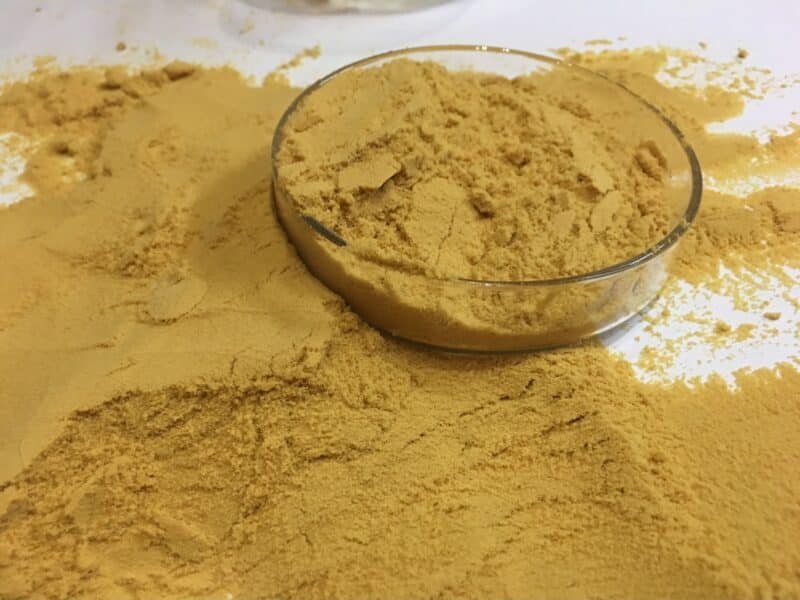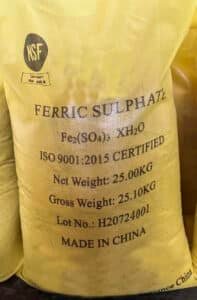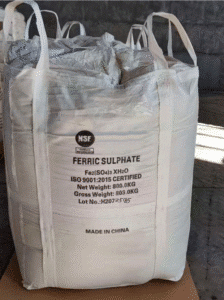
Contents
- 1 Ferric Sulfate or Polyferric Sulfate? Choosing the Right Coagulant for Your Water Treatment Needs
- 2 The Short Answer: They’re Related, But Not the Same
- 3 Understanding the Veteran – Ferric-Sulfate
- 4 Embracing the Efficient Newcomer – Polyferric Sulfate (PFS)
- 5 Head-to-Head Comparison – Ferric Sulfate vs. Polyferric Sulfate
- 6 How to Choose the Right Coagulant
- 7 Conclusion
Ferric Sulfate or Polyferric Sulfate? Choosing the Right Coagulant for Your Water Treatment Needs
In the field of water treatment chemicals, Ferric-Sulfate stands as a trusted “veteran.” But with the rise of its “next-generation” counterpart — Polyferric Sulfate (PFS) — many professionals naturally ask: Are they the same thing? And if not, which one is better suited to your needs?
As your trusted partner in water treatment, WaterCareChem providesa clear, data-driven comparison between these two iron-based coagulants to help you select the right solution for your unique needs.

The Short Answer: They’re Related, But Not the Same
Although both compounds are iron-based coagulants, they’re differ significantly in production methods, molecular structure, treatment efficiency, and application range.
In essence, Polyferric Sulfate can be regarded as a high-efficiency, upgraded version of traditional Ferric-Sulfate — engineered for better coagulation performance and broader adaptability.
Understanding the Veteran – Ferric-Sulfate
Ferric Sulfate (Fe₂(SO₄)₃) typically appears as a pale yellow or grayish-white powder or granular solid. It is a classic inorganic coagulant widely used for decades in water treatment.
How It Works
- Charge Neutralization: Most colloidal particles in water carry a negative charge, causing mutual repulsion that prevents settling. When Ferric Sulfate dissolves in water, it releases ferric ions (Fe³⁺) with strong positive charges. These ions neutralize the negative charges on colloidal particles, destabilizing them and allowing aggregation. This process is a fundamental part of modern coagulation systems, as explained by the U.S. Environmental Protection Agency (EPA).
- Sweep Flocculation: The hydrolysis of Ferric Sulfate forms ferric hydroxide (Fe(OH)₃) — an insoluble, flocculent precipitate. As it settles, it traps and sweeps down suspended solids and fine particles, producing clearer water.
Typical Applications
Thanks to its low cost and proven reliability, it remains a practical choice for:
-
Primary sewage and wastewater treatment
-
Pretreatment of industrial wastewater
-
Precipitation processes in selected industries
Limitations
However, it has a few drawbacks:
-
Narrow effective pH range (usually effective only under alkaline conditions)
-
Slow-settling flocs that can lengthen sedimentation time
-
Reduced performance in low-temperature or low-turbidity conditions
-
Possible residual iron if overdosed, causing water discoloration
Embracing the Efficient Newcomer – Polyferric Sulfate (PFS)
To address these limitations, scientists developed Polyferric Sulfate (PFS) using advanced polymerization techniques. Its general formula is [Fe₂(OH)ₙ(SO₄)₃₋ₙ/₂]ₘ, appearing as a reddish-brown liquid or solid powder.
Structurally, PFS is more than just a ferric salt — it is a pre-polymerized compound where multiple Fe³⁺ ions are connected by hydroxyl (-OH) bridges, forming polynuclear complex structures. This structure is the foundation of its superior performance. Unlike simple ferric salts, PFS is a pre-polymerized coagulant containing polynuclear hydroxyl complexes. These polymeric iron structures deliver superior coagulation performance across various water qualities, as highlighted in ScienceDirect research.
Key Advantages of Polyferric Sulfate
-
Enhanced Charge Neutralization and Bridging Ability
PFS molecules carry a higher density of positive charge than standard Ferric-Sulfate. Its long-chain polymer structure bridges between particles, forming larger, denser, and stronger flocs that settle faster. -
Wider Effective pH Range
PFS is effective from pH 4 to 11, minimizing the need for frequent pH adjustments and lowering overall chemical consumption. -
Superior Decolorization and Demulsification
Especially effective in treating industrial wastewater containing oils, dyes, or organics, PFS breaks emulsions and removes color efficiently. -
Lower Residuals, Denser Sludge
PFS produces compact, easily dewatered sludge, reducing sludge handling and disposal costs. -
Excellent Performance in Cold or Low-Turbidity Conditions
Even in cold climates or clear water conditions, PFS maintains stable coagulation efficiency.
Head-to-Head Comparison – Ferric Sulfate vs. Polyferric Sulfate
| Characteristic | Ferric Sulfate | Polyferric Sulfate (PFS) |
|---|---|---|
| Chemical Structure | Simple inorganic salt (Fe₂(SO₄)₃) | Polynuclear hydroxyl polymer complex |
| Physical Form | Powder or crystals | Liquid or solid |
| Mechanism of Action | Charge neutralization, sweep flocculation | Charge neutralization, adsorption-bridging, sweep flocculation |
| Floc Characteristics | Light, loose, slow-settling | Dense, strong, and fast-settling |
| Effective pH Range | Narrow (mostly alkaline) | Wide (pH 4–11) |
| Treatment Efficacy | Basic coagulation, phosphorus removal | Advanced coagulation, phosphorus removal, decolorization, COD removal, demulsification |
| Sludge Characteristics | Larger volume, loose texture | Smaller volume, dense, easy to dewater |
| Overall Cost | Lower unit price, higher dosage | Slightly higher unit price, lower dosage, lower total cost |

How to Choose the Right Coagulant
Selecting between Ferric Sulfate and Polyferric Sulfate depends on your water quality, treatment goals, and operational priorities.
Ferric Sulfate is suitable when:
-
Budgets are tight and effluent quality demands are moderate.
-
The process primarily targets suspended solids and basic phosphorus removal.
-
Existing systems already use Ferric Sulfate successfully and stably.
Polyferric Sulfate is recommended for:
-
Municipal wastewater treatment plants requiring efficient phosphorus and nitrogen removal.
-
Industrial wastewater treatment, including dyeing, electroplating, paper, food, and metallurgy sectors with complex contaminants.
-
Cold or low-turbidity water treatment, such as reservoir or river water.
-
Operations seeking efficiency and cost reduction, as lower dosage, faster settling, and reduced sludge lead to overall savings.
Both coagulants are approved for drinking water treatment when properly applied, in line with WHO Drinking Water Guidelines.
Conclusion
Ferric Sulfate and Polyferric Sulfate are closely related yet fundamentally distinct coagulants. While Ferric-Sulfate remains a dependable and economical option, Polyferric Sulfate represents the next step in water treatment innovation — combining higher efficiency, adaptability, and long-term cost benefits.
At WaterCareChem, we supply both high-quality Ferric Sulfate and Polyferric Sulfate, backed by expert technical support. Our experienced team can help you choose the ideal solution for your specific water conditions, process requirements, and cost targets.
Contact us today for FREE SAMPLES and a customized technical consultation — and let’s optimize your water treatment performance together.
Poly Ferric Sulfate (PFS): Your Powerful Solution for Water Purification and Treatment
Last Updated on 2025-10-24 by system
